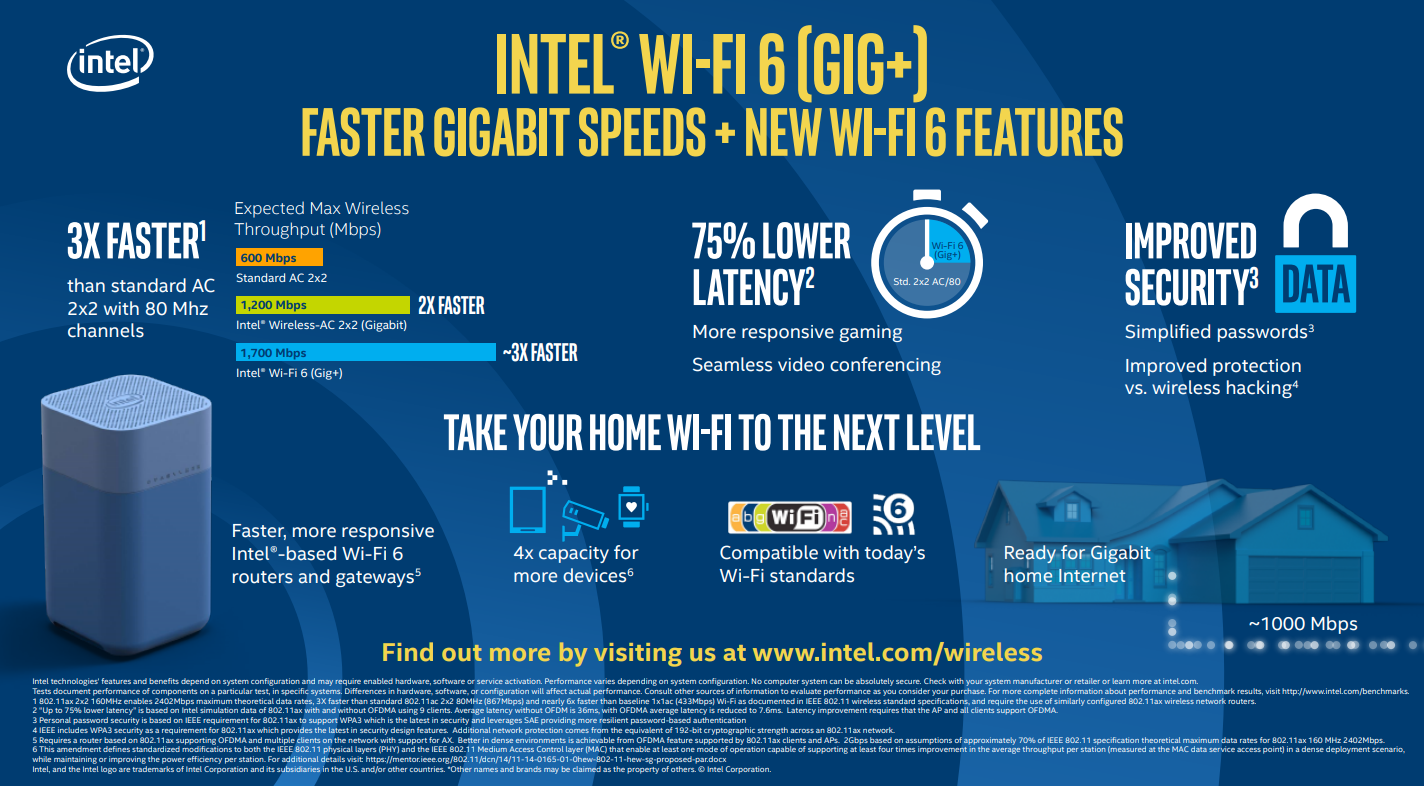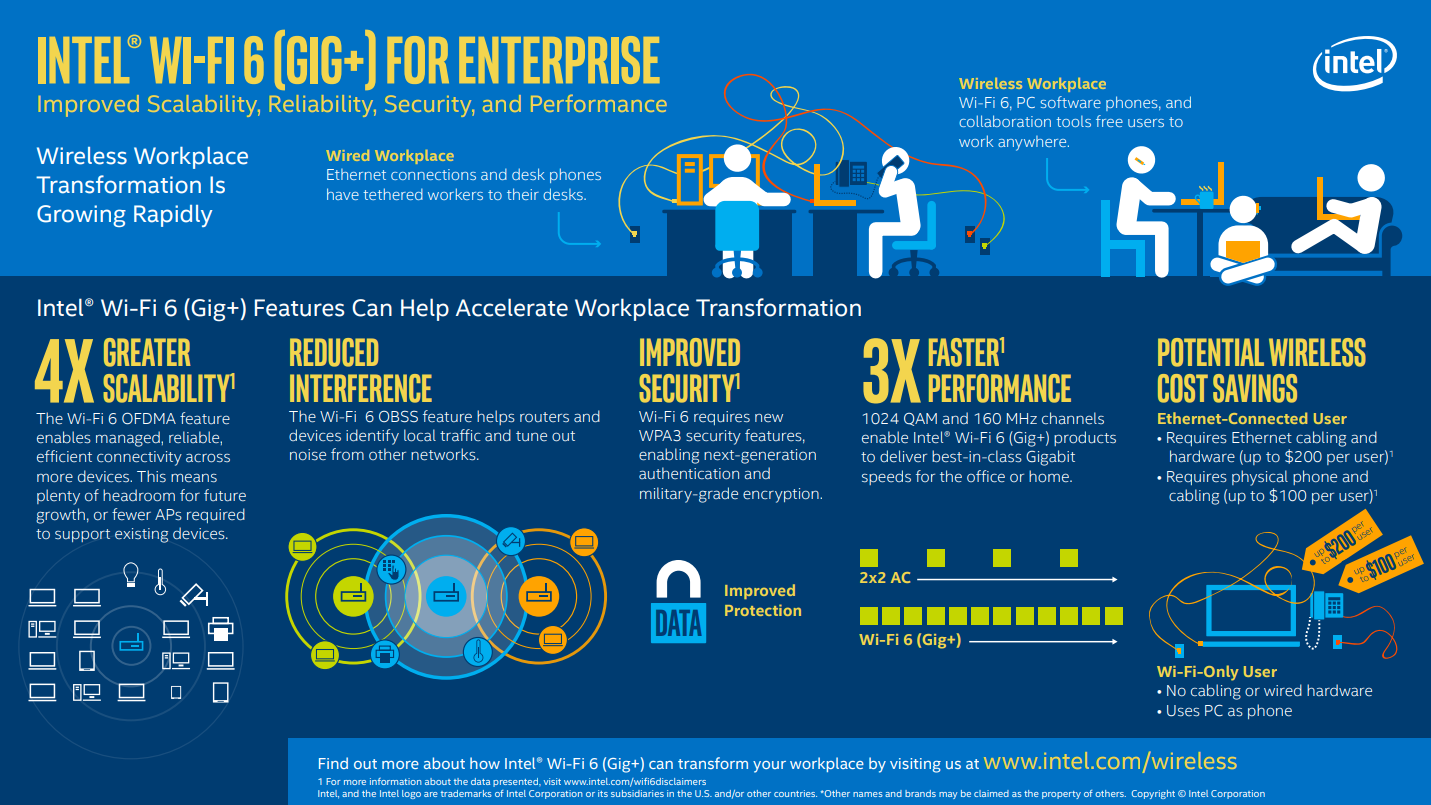Before the buzz around 5G – fifth generation cellular network technology is over, here comes the next generation wireless standard – wifi 6. wifi 6 is the most significant advancement in wireless LAN technology in over a decade. wifi 6 enhances capacity, coverage and Performances for a seamless experience even in densely occupied spaces like stadiums, Shopping Malls or other public venues packed with connected devices. wifi 6 certified networks also enable improved battery performances in the connected devices.
wi fi Generations – New Version Numbers:
The previous wifi standards holds confusing Version Numbers. like 802.11X. X represents a,b,g,n,ac etc.
New naming system has been introduced for the wifi standards for ease of customer identification. The table below shows the wi fi standards in reverse chronological order.
| Wi-Fi Standard | New Naming Sequence | Year of Release | User Interface Visuals |
| 802.11ax | Wi-Fi 6 | 2019 |  |
| 802.11ac | Wi-Fi 5 | 2014 |  |
| 802.11n | Wi-Fi 4 | 2009 |  |
| 802.11g | 2003 | ||
| 802.11a | 1999 | ||
| 802.11b | 1999 |
wi fi 6 Performances:
The key benefits of technology are
- Higher Data Rates
- Increased Capacities
- Seamless connectivity in crowded environment with many connected devices
- Enhanced battery power consumption in connected devices.
The wifi 6 certified devices enhance user experiences with streaming ultra-high definition movies, seamless performances while using high bandwidth and low latency applications, stay connected in congested venues, smart home environment, IoT applications, Virtual and Augmented reality applications, e-Learning, telepresence and health monitoring becomes more viable.
According to Intel, wifi 6 delivers nearly 3X faster speeds, upto 4X higher capacities, 75% lower latency, next generation security to the PCs and wireless networks. Intel® Wifi 6 products support optional 160 MHz channels, enabling the fastest possible theoretical maximum speeds (2402 Mbps) for typical 2×2 802.11ax PC wi fi products
wifi 6 will require WPA3 security certification as a minimum. The improvements in network protection is due to 192-bit cryptographic strength in comparison to 128-bit AES encryption utilized with WPA-2.

The wifi 6 OFDMA (orthogonal frequency division multiple access) feature enables managed, reliable, efficient connectivity across more devices. Also provides 4X greater scalability, that means fewer Access Points required to support existing devices.
OBSS (Orbiter Boom Sensor System) helps reduced interferences for the routers and devices identify local traffic and tune out noise from another network.
TWT (Target Wake Time) is a feature used in wifi 6 that helps the connected devices to use less battery power. Since the access points knows the target wake time, it can tell the device exactly when to put its wi fi radio to sleep and exactly when to wake it up to receive the next transmission. This will conserve power, as it means the wifi radio can spend more time in sleep mode. And that means longer battery life.

What to look for while buying the wifi device in the future:
While buying new wifi devices in the future, rather than going through the specs sheets to find whether 802.11ac or 802.11ax, the new nomenclature will easily identify whether the device is wifi 5 or 6. The wifi 6 certified logo on the devices will tell that the wi fi device is latest with faster speeds and better performances.
Release Dates – Wi-Fi 6:
wifi 6 certified routers and devices are slowly available in the market for sale. The recently announced Samsung galaxy S10 supports wifi 6. Beginning early 2020, major global device manufacturers will begin to embrace the technology and will start to establish itself as a standard feature for high-end WLAN enabled products.
Product buying links for some of the Wifi 6 Routers that hit the market are displayed below.








Comments